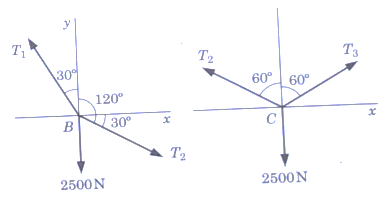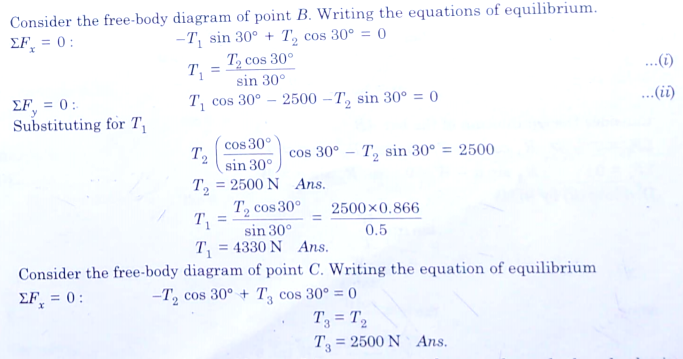Unit 2
Equilibrium
Q1. Determine the required length of cord AC in Fig. below so that the 8-kg lamp can be suspended in the position shown. The undeformed length of spring AB is l = 0.4 m and the spring has a stiffness of kAB = 300 N/m.
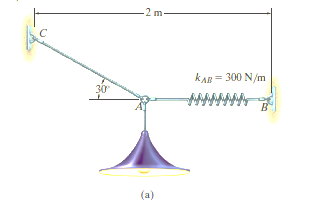
Solution:
By simply drawing the free-body diagram, we get,
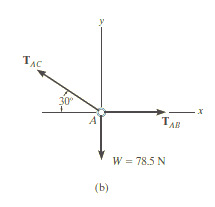
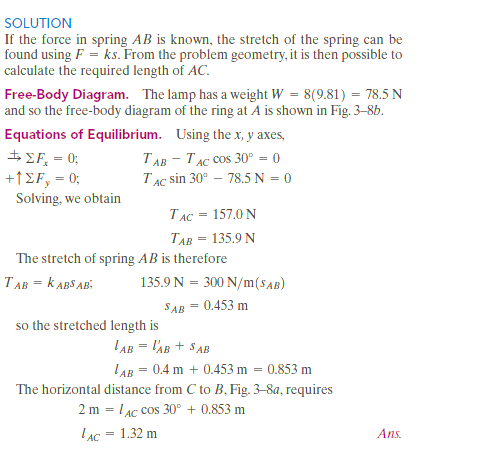
Q2. Determine the force in each cable used to support the 40-lb crate shown in Fig.
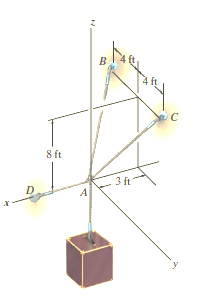
Solution:
Initially, free-body diagram is drawn below.
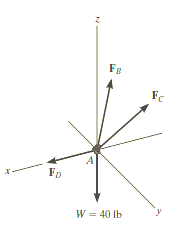
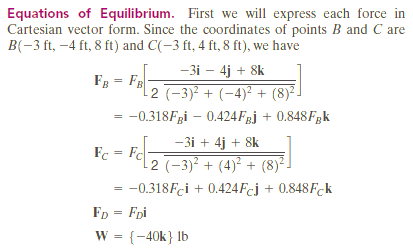
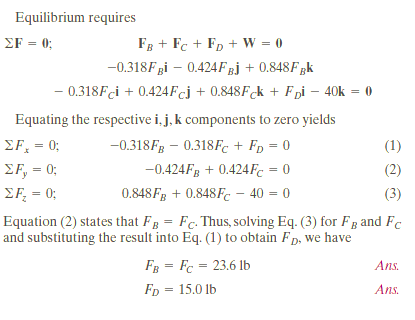
Q3. Determine the tension in each cord used to support the 100-kg crate shown in Fig.
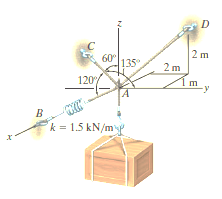
Solution:
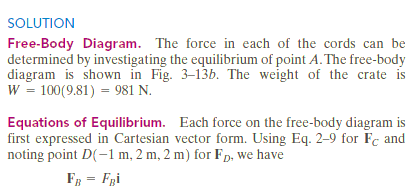
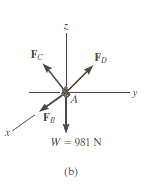
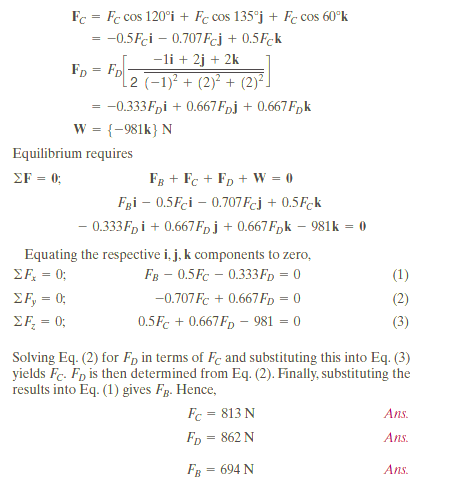
Q4. A fixed crane has a mass of 1000 kg and is used to lift a 2400-kg crate. It is held in place by a pin at A and a rocker at B. The centre of gravity of the crane is located at G. Determine the components of the reactions at A and B.
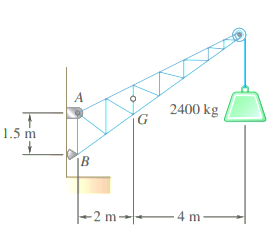
Solution:
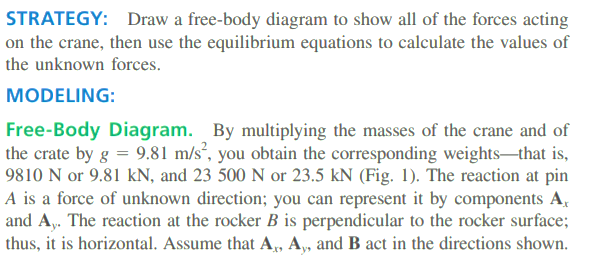
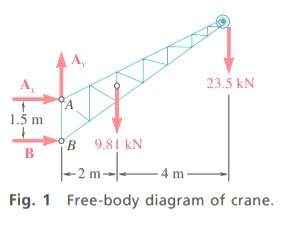
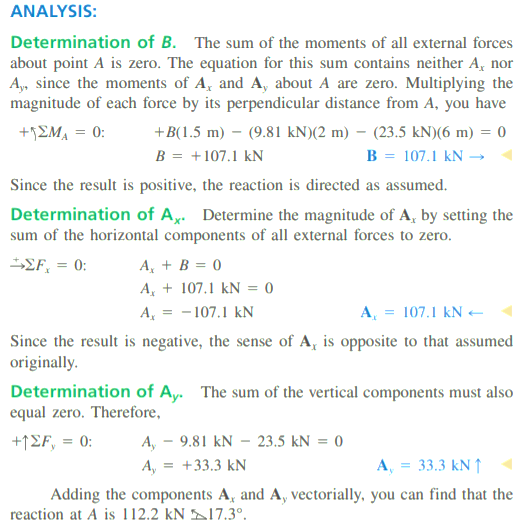
Q5. Three loads are applied to a beam as shown. The beam is supported by a roller at A and by a pin at B. Neglecting the weight of the beam, determine the reactions at A and B when P = 15 kips.
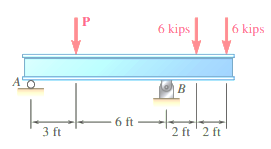
Solution:

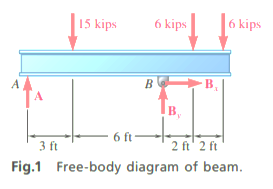
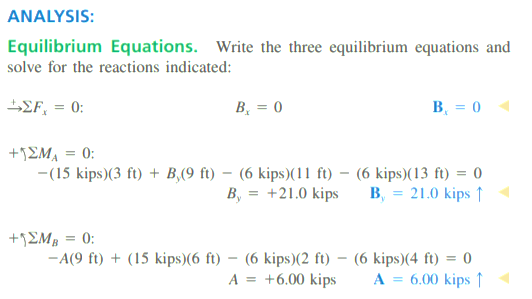
Q6. A loading car is at rest on a track forming an angle of 25° with the vertical. The gross weight of the car and its load is 5500 lb, and it acts at a point 30 in. from the track, halfway between the two axles. The car is held by a cable attached 24 in. from the track. Determine the tension in the cable and the reaction at each pair of wheels.
Solution:
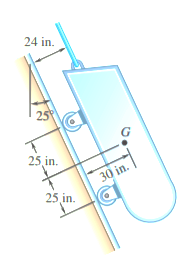
Solution:
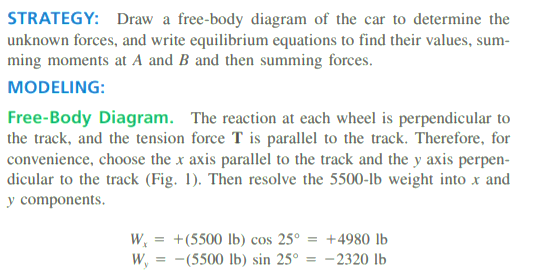

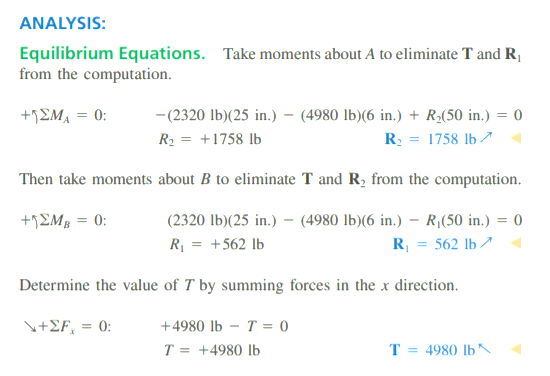
Q7.The frame shown supports part of the roof of a small building. Knowing that the tension in the cable is 150 kN, determine the reaction at the fixed end E.
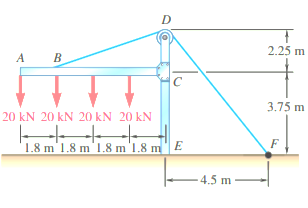
Solution:
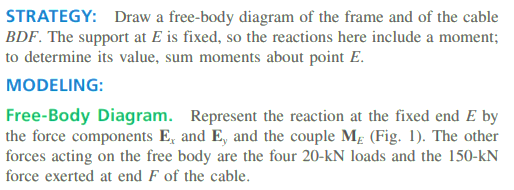
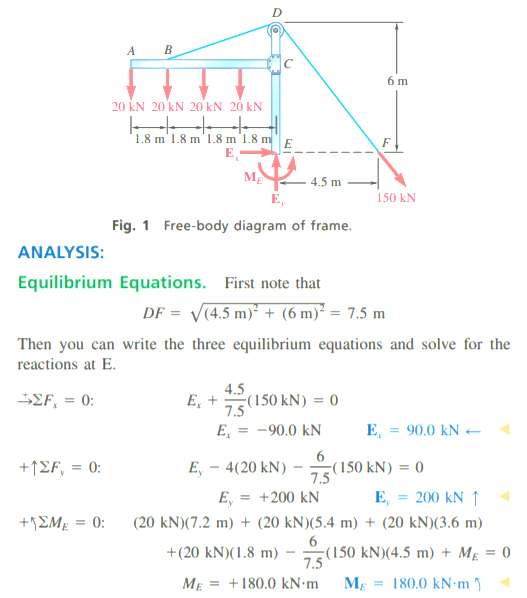
Q8. A 400-lb weight is attached at A to the lever shown. The constant of the spring BC is k = 250 lb/in., and the spring is unstretched when θ = 0. Determine the position of equilibrium.
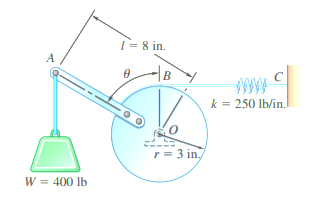
Solution:
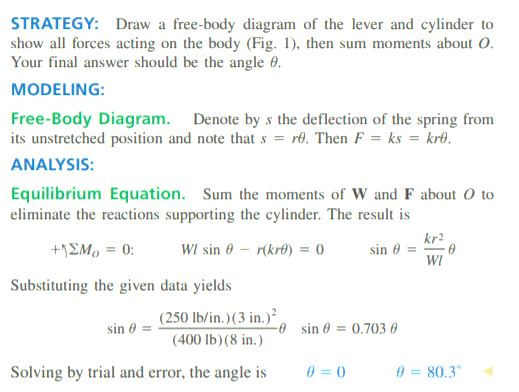
Q9. Two ropes are tied together at C. if the maximum tensile force is 3.5 kN, what is the maximum force P that can be applied and in which direction?
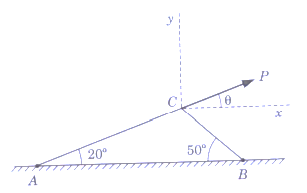
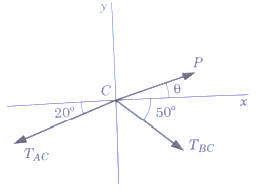
Solution:
Initially, we will draw the diagram denoting forces in the form of vectors for more simplification.
The further calculations involve finding the unknown using equations of equilibrium, i.e.
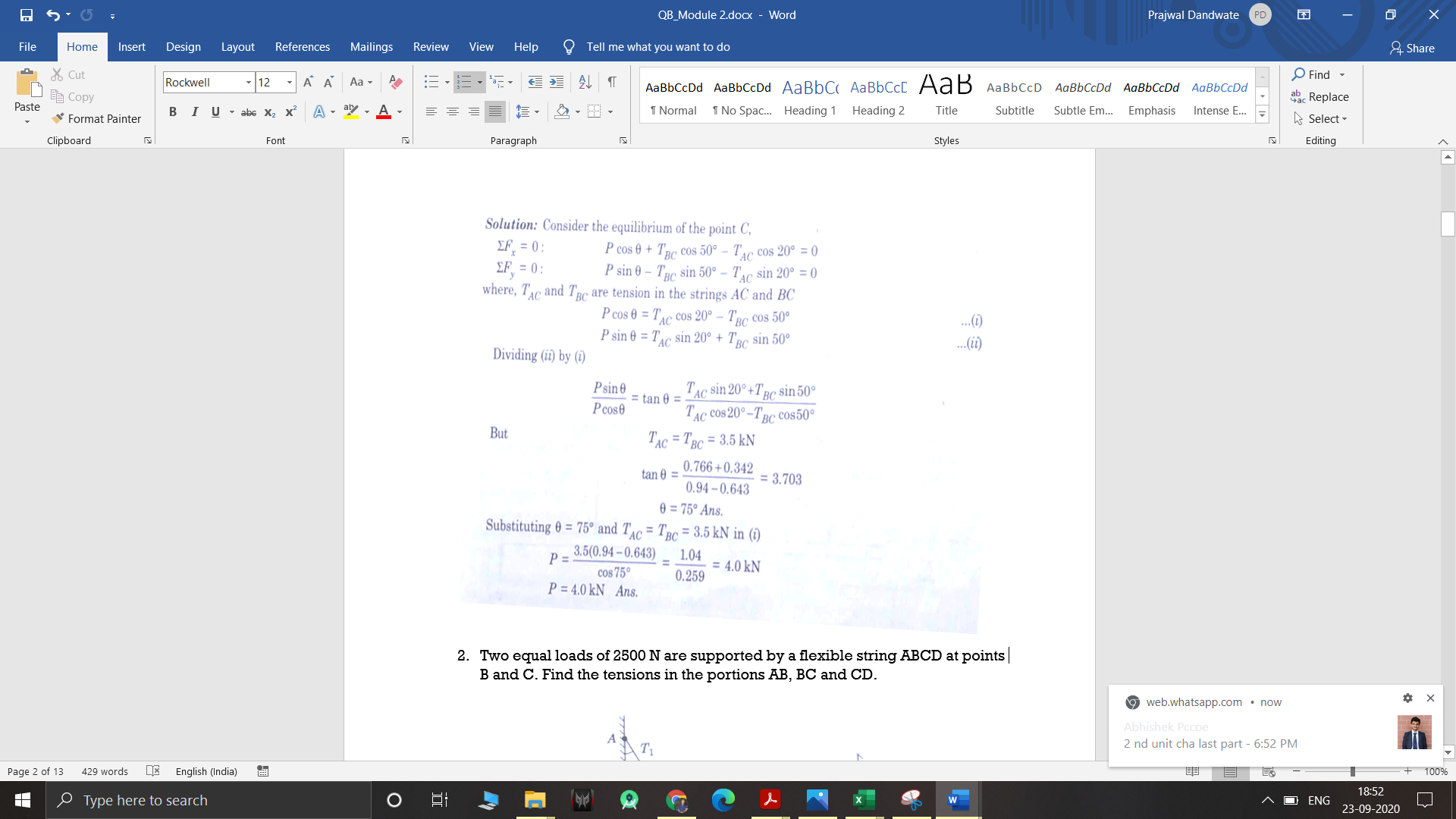
Q10. Two equal loads of 2500 N are supported by a flexible string ABCD at points B and C. Find the tensions in the portions AB, BC and CD.

Solution:
Dividing the tensions for simplification,
